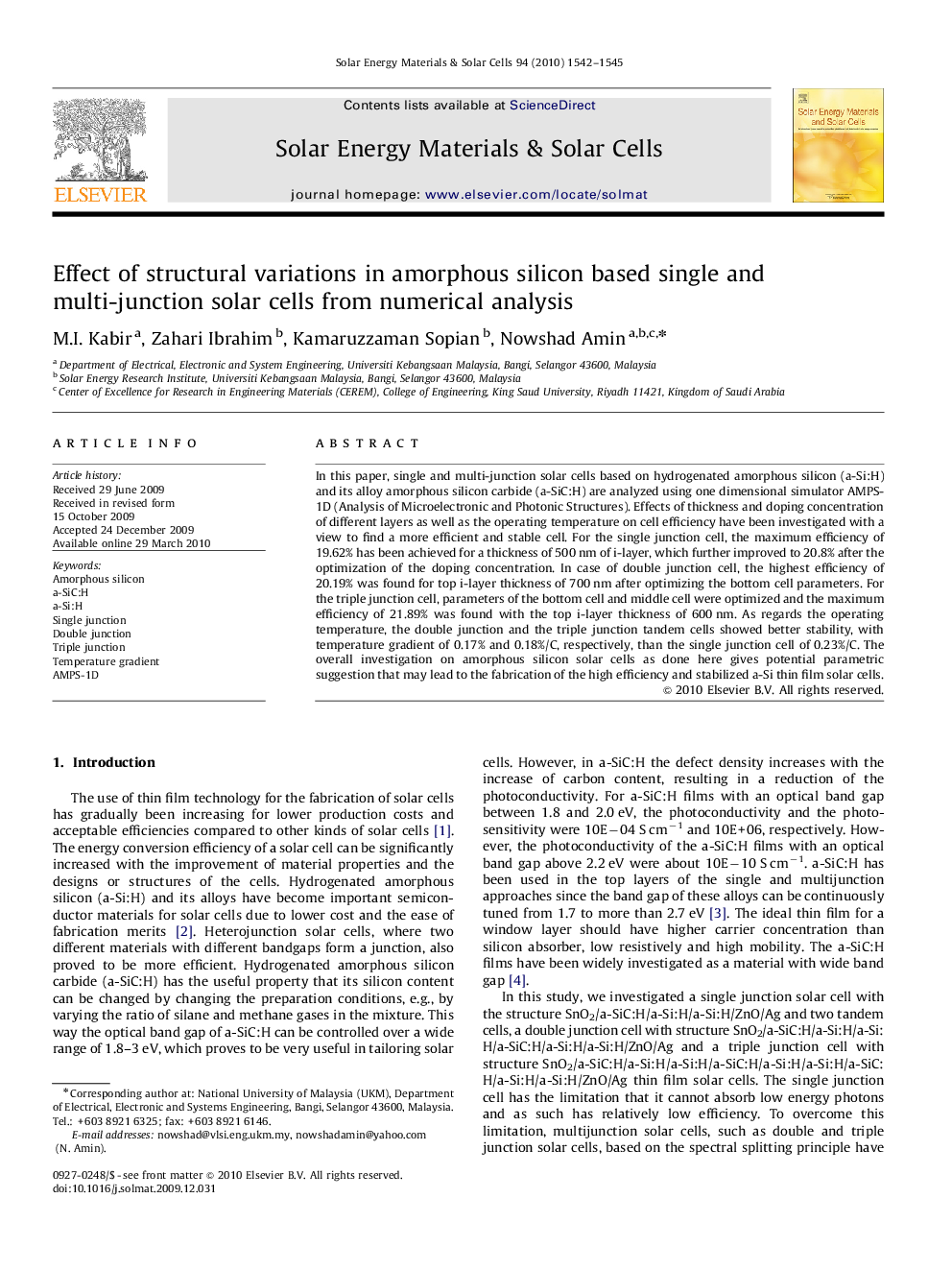| Article ID | Journal | Published Year | Pages | File Type |
|---|---|---|---|---|
| 79339 | Solar Energy Materials and Solar Cells | 2010 | 4 Pages |
In this paper, single and multi-junction solar cells based on hydrogenated amorphous silicon (a-Si:H) and its alloy amorphous silicon carbide (a-SiC:H) are analyzed using one dimensional simulator AMPS-1D (Analysis of Microelectronic and Photonic Structures). Effects of thickness and doping concentration of different layers as well as the operating temperature on cell efficiency have been investigated with a view to find a more efficient and stable cell. For the single junction cell, the maximum efficiency of 19.62% has been achieved for a thickness of 500 nm of i-layer, which further improved to 20.8% after the optimization of the doping concentration. In case of double junction cell, the highest efficiency of 20.19% was found for top i-layer thickness of 700 nm after optimizing the bottom cell parameters. For the triple junction cell, parameters of the bottom cell and middle cell were optimized and the maximum efficiency of 21.89% was found with the top i-layer thickness of 600 nm. As regards the operating temperature, the double junction and the triple junction tandem cells showed better stability, with temperature gradient of 0.17% and 0.18%/C, respectively, than the single junction cell of 0.23%/C. The overall investigation on amorphous silicon solar cells as done here gives potential parametric suggestion that may lead to the fabrication of the high efficiency and stabilized a-Si thin film solar cells.
